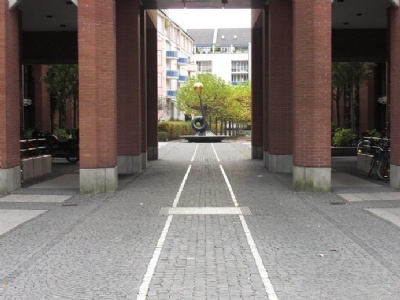Bürgerbräukeller
On the evening of November 8, 1923, Hitler attempted to seize power by means of a coup. The location of the coup was the beer hall Bürgerbräukeller in Munich. At the time of the coup there was political chaos in both the state of Bavaria and the rest of Germany. The Bavarian prime minister Eugen von Knilling had issued a state of emergency and appointed Gustav von Kahr as a Bavarian commissioner. On the evening of November 8, 1923, von Kahr, along with Colonel Hans Ritter von Seisser and General Otto von Lossow, was at the Bürgerbräukeller to bring order in the city. In connection with this, Hitler stormed the hall with a number of associates and supported by about 600 SA men aroound the city. He entered the beer hall and climbed up at the podium declaring that a national revolution (coup) had begun. Other SA units had occupied other beer halls in Munich and awaited orders from Hitler. Hitler forced von Kahr, Seisser and Lossow into a remote room and demanded that they join the coup. But von Kahr and others made it clear that they did not support the coup, something Hitler had not expected. Later in the evening, Kahr, Seisser and Lossow were released and it became increasingly apparent that the coup was about to fail because important people and institutions did not support the coup.
The night of November 9th was marked by uncertainty and a oscillation between hope and despair among the coup participants. General Ludendorff (a respected First World War general and participant in the coup) suggested that they would leave the Bürgerbräukeller to meet up with other coup participants in the city. Hitler and other participants (about 2,000 people) left the Bürgerbräukeller and began, led by Ludendorff, to walk out on the streets of Munich in the direction of the Bavarian ministry of defence. The tension was undeniably in the air and at Feldherrnhalle their way was blocked by the police. Exactly what then happend is uncertain, but a brief shooting occured which resulted in the death of sixteen coup participants and four policemen. Hitler was slightly injured and managed to escape but surrendered to the police a few days later and was brought to justice in February 1924.
Between 1933 and 1944, the Bürgerbräukeller and Feldherrnhalle became central points in the Nazi history description where martyrdom was glorified and celebrated. Together with ”old fighters”, Hitler conducted a ceremonial annual march on November 9 in memory of those who died at Feldherrnhalle.
It was also in Bürgerbräukeller that the carpenter Georg Elser tried to kill Hitler by a time bomb on November 9, 1939. Elser was a strong opponent of Hitler and had traveled to Munich to prepare for the bomb plot. Elser managed to place a time bomb in a pillar behind Hitler’s podium. Elser had been hiding in the Bürgerbräukeller after closing and worked to carve out the hole during the nights. When Hitler spoke in the evening, he left the meeting an hour earlier than planned and therefore escaped the explosion that killed eight people. Elser was arrested later that evening as he tried to cross the border into Switzerland. He was linked to the plot, put in concentration camps and murdered in Dachau in April 1945. Bürgerbräukeller was seriously damaged by the bomb and was not renovated but instead used as a storage room. The annual commemoration was held between 1940 and 1943 in the Löwenbräukeller and the last speech was held in 1944 in the Circus Krone.
Current status: Demolished with memorial tablet (2010).
Address: Rosenheimer Strasse 15, 81667 München.
Get there: Metro to Rosenheimer Platz Station.
Follow up in books: Kershaw, Ian: Hitler – A Biography (2008).


Hitler was fully aware that an attempt of his life could take place anywhere at anytime and by anyone. One way to make possible attempts more difficult was to deviate from planned times, itineraries and places, which meant that attackers could not be sure where and when Hitler came or left. After the war, the Americans used the building as a canteen storage and in 1979 the building was torned down to make room for a hotel. To Elser’s memory there is a memorial on the ground and it is located right where the explosion occured.